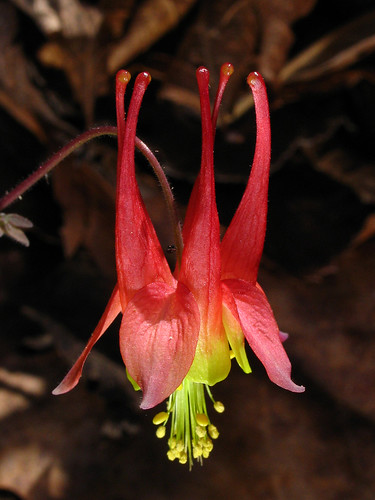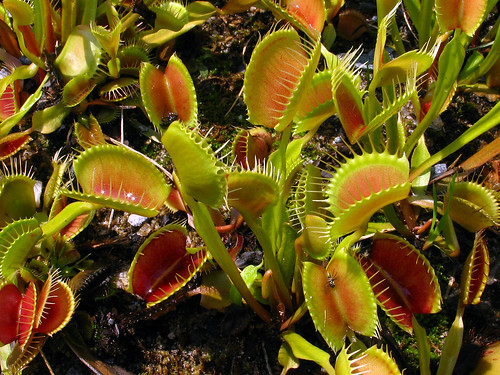 |
| The tiny white flowers are followed by conspicuous, glossy black berries that are eaten by a wide variety of birds and mammals. |
Two species of black nightshade are native to Florida, Solanum americanum, the American black nightshade (also known as the common or glossy black nightshade), and Solanum chenopodioides, the goosefoot black nightshade. The former has shiny black fruits that are held erect and are so glossy as to appear coated with varnish, whereas the latter has nodding, dull black fruits. In general, black nightshades are ignored by gardeners and are regarded as weedy annuals of little horticultural merit.
Being common weeds, I did not pay any more attention to the black nightshades occurring in Florida than I did to black nightshades growing in Chicago alleys or in waste ground in Puerto Rico. However, my negative views changed when, on an impulse, I rescued a seedling of Solanum americanum growing in a lawn in downtown West Palm Beach. The seedling was established in a pot of sandy soil, and, when it was well-rooted, planted in a sunny, moist spot in the garden. American black nightshade occurs in nearly every county in Florida in a wide variety of both upland and wetland sites. Therefore, I had no doubts that it would be easy to grow and easy to propagate from cuttings and seeds, and that indeed turned out to be the case.
The seedling soon grew into a bushy plant nearly 3 feet high and almost as wide, bore innumerable little flowers, and became laden with an equal number of showy, glossy black fruits. Growing in close proximity in the garden, I was able to carefully observe this plant and learned that this much maligned "weed" had many virtues.
Solanum americanum is a fast-growing pioneer plant that helps to stabilize recently disturbed soil—this is an important ecological role. In the garden, it plays the useful role of attracting a wide variety of wildlife. Most Solanum species, including American black nightshade, have flowers adapted for pollination by bees. Each anther opens by a tiny pore at its tip and the pollen is inaccessible to most insects. Bees, however, are able to shake the pollen out of the anthers by grasping it with their legs and buzzing their wings. The resulting vibrations cause the pollen to spill out of the anthers in the same manner that shaking a salt shaker causes salt to spill out. Once the fruits are set and begin to ripen, the plant becomes attractive to larger animals and 31 birds and a dozen mammals have been recorded as eating the berries of American black nightshade.
Like many other plants, American black nightshade has its flaws and three stand out in particular. Being an annual or short-lived perennial, plants are not permanent in the garden and must be periodically replaced. Secondly, as with all plants, it is sometimes afflicted by pests, the most frequent being aphids and leaf miners, but occasionally tobacco or tomato hornworms may make a meal of foliage. Aphids and leaf miners are tolerated by me since I feel that they contribute to the diversity of wildlife in my yard and I leave hornworms alone since they grow into hawkmoths, which are important pollinators of native plants whose flowers open at dusk. Lastly, large plants with masses of black, glossy berries may seem out of place among gayly colored wildflowers and look as if they would be more at home in the herb or vegetable garden.
Since black nightshades can become serious agricultural weeds, I was worried that the seedling I rescued would overrun my garden. Fortunately, black nightshades are specialized for colonizing open, disturbed ground and, in my experience, the seeds will not germinate if the ground is covered in any way, such as by mulch, fallen leaves, or other plants. Thus, in spite of both the original and subsequent plants producing huge crops of berries, less than two dozen seedlings have spontaneously appeared in my garden in four years.
Some gardeners may hesitate to grow American black nightshade because it is frequently encountered on lists of poisonous plants. However, and rather paradoxically, it is just as frequently encountered on lists of edible plants! Strong evidence of its edibility has come from feeding experiments with cattle that ultimately were unable to demonstrate any toxicity (Rogers & Ogg 1981). Additionally, there are numerous instances of the leaves and ripe berries being used as food both by aboriginal and modern cultures throughout its range. Recently, Solanum americanum has received attention as a vegetable worthy of domestication to supplement the nutrition of poor, rural, Central American communities. The plant is already a component of the everyday diet of such communities and scientific investigations have shown that American black nightshade grows rapidly, adapts well to a wide range of altitudes and soils, and has more protein, calories, fiber, calcium, iron, B vitamins, and vitamin C than spinach (De Macvean & Pöll 2002). Because of the conflicting reports of its toxicity, there is some speculation that perhaps both toxic and nontoxic races exist. This theory is supported by observations that some plants have bitter leaves and unpleasant tasting berries while others have bland leaves and mildly sweet berries.
Conservation Note: Florida's only other species of black nightshade, Solanum chenopodioides, while common in most parts of Florida, is listed as critically imperiled in southern Florida by the Institute for Regional Conservation. As a result, care should be taken not to endanger south Florida populations of Solanum chenopodioides by collecting plants or removing cuttings or seeds.
References:
De Macvean, A.L. and Pöll, E. 2002. Ethnobotany (Chapter 8). In: Vozzo, J.A. (ed.) Tropical tree seed manual. U.S. Department of Agriculture, Forest Service. Agriculture Handbook No. 721.
Rogers, B.S. and Ogg, A.G. 1981. Biology of Weeds in the
Solanum nigrum Complex (
Solanum Section
Solanum) in North America. U.S. Department of Agriculture, Agricultural Reviews and Manuals, ARM-W-23.
© 2003 as to text; 2009 as to the image. Rufino Osorio. All rights reserved.





